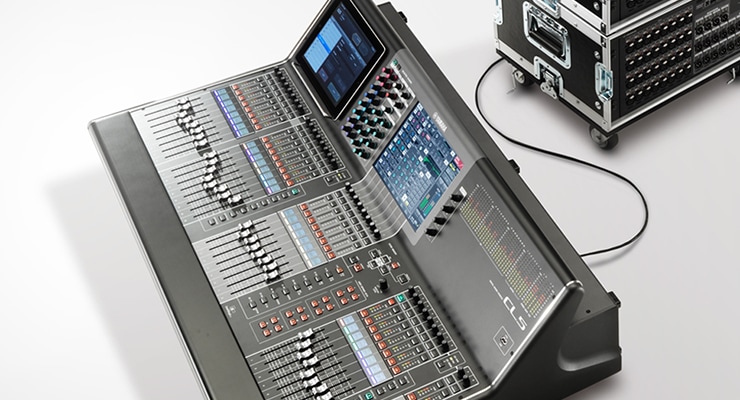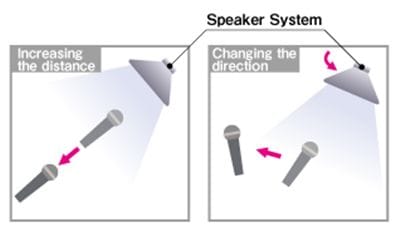Better Sound for Commercial Installations
Part 3: Mixers and Processors

05. Feedback Control - Feedback Causes
In the next three sections we'll take a look at feedback, from what causes it to how it can be controlled. Although feedback control is only a small part of the tuning process, we hope this will give you a feel for the kind of detail that overall room tuning entails.
Feedback is Caused By a "Loop"

At events where microphones are used you might have experienced a sudden loud squealing or tone that has sent people scurrying to turn down the volume while everyone else covers their ears. That noise is feedback.
Acoustic sound picked up by a microphone is amplified and then returned to the acoustic space via speaker systems. If the output from the speaker systems is then picked up by the microphone, it is again re-amplified and returned to the acoustic space ... and that is the beginning of an infinitely repeating loop that is the basic cause of feedback. (Figure: Feedback Loop)
All but the most perfectly designed acoustic spaces have resonant peaks - frequencies that are naturally emphasized or "boosted" by the acoustics of the room - and that is what determines the pitch of the feedback tone.
Physical Feedback Control

The simplest way to stop feedback is to physically prevent sound from the speaker systems from being picked up by any microphones in use. One way of doing this is to reduce the volume, but in some cases this approach alone may result in insufficient sound pressure level. The next step is to increase the distance between microphones and speakers, and/or reposition microphones and speakers so that they don't point directly at one another, as shown in the illustrations. (Figure: Repositioning microphones and speakers to prevent feedback.)
Due to sound pressure level requirements and space limitations, the basic feedback control methods described above will not always produce the desired results. In such cases it becomes necessary to modify the audio signal itself. We'll start with
Contents
The sound systems that broadcast the information you're hearing have been carefully designed and installed to suit the needs of each individual facility.
This series offers information aimed at achieving the best possible sound in commercial installations, from the basics to equipment selection and day-to-day operation.








